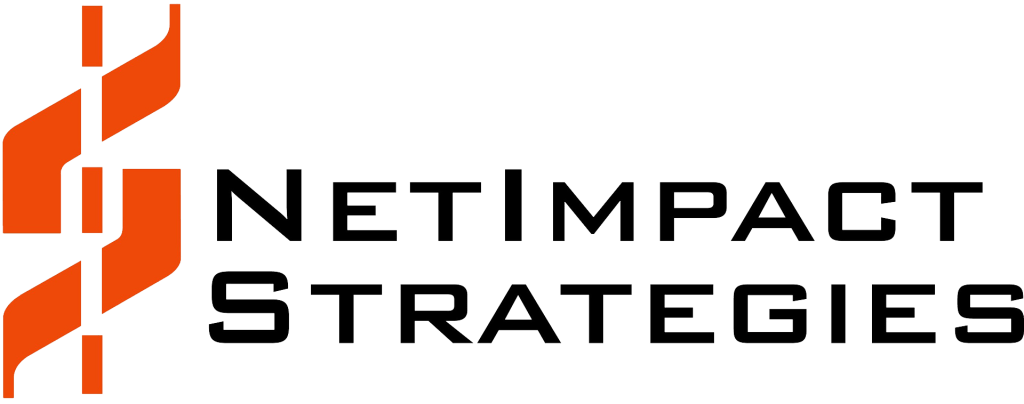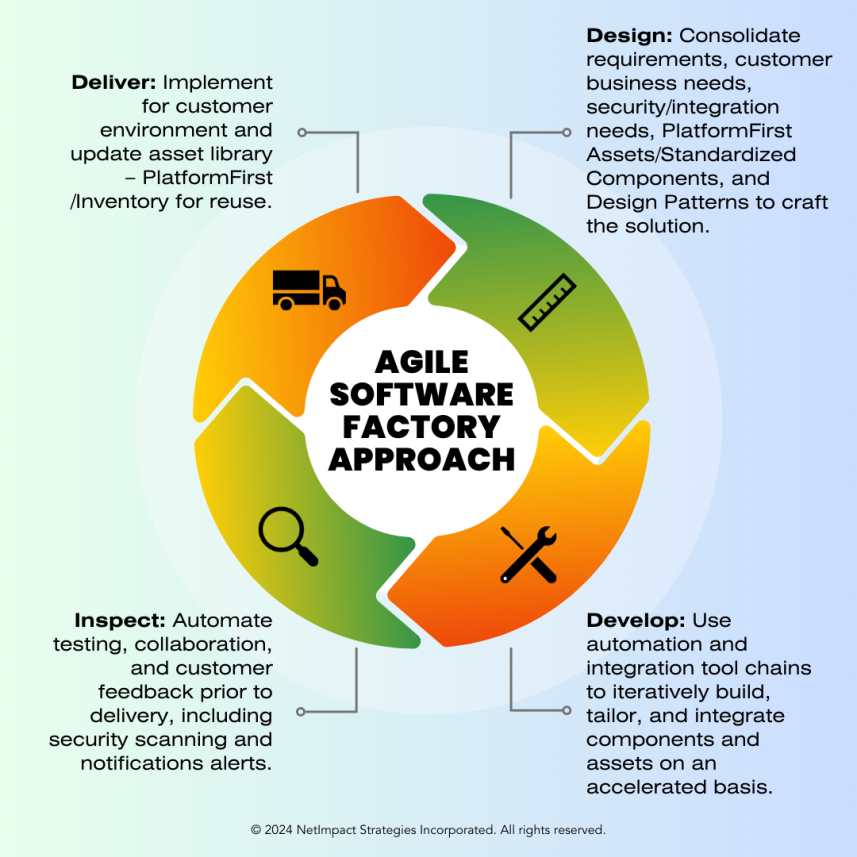When we think of a factory, an immediate picture comes to mind of a place where several machines are working continuously to create identical products, a relentless conveyor belt carrying them toward final inspection. What does that mean when it comes to producing “invisible assets,” like in software development? Can intangible assets be created using the mass manufacturing concept of scalable and repeatable methods, tools, and standards – an optimized assembly line that consistently produces high-quality software products?
The answer is yes, and the concept is called an Agile Software Factory.
| Our ‘Fact or Fiction’ series explores the realities of various federal IT challenges and factors contributing to common myths and misconceptions across diverse, trending topics. In this piece, we dive into the truth about whether digital playbooks are enough to make an Agile Software Factory. |
Agile Software Factories reimagine the successes of factories from the Industrial Revolution for the current era of Digital Renaissance. By applying the concepts of integrating a network of specialized teams – each focusing on a specific aspect of software development – and production lines of smaller teams delivering components through short, iterative cycles undergoing constant tests and refinement, Agile Software Factory delivers the consistently, quality, and cost efficiency expected of traditional factories.
Fact: Digital playbooks provide crucial guardrails for consistency and scale

In the world of software development, digital playbooks are comprehensive guides that contain information on coding standards, testing procedures, deployment strategies, and tools designed to facilitate and streamline various aspects of software development within an agile framework.
Digital playbooks, in an agile software factory, serve as an essential guide in shaping the software development process. They contribute by:
- Promoting consistency, collaboration, and efficiency across development teams by reducing errors, streamlining the processes, and integrating important elements up front – for example, incorporating information architecture principles for experience-friendly user interface designs.
- Providing standardized approaches to project planning, sprint execution, quality assurance, and deployment, with user interfaces for easy access to guidance and processes.
- Encapsulating proven strategies and lessons learned from previous projects.
- Empowering teams to make informed decisions, mitigate risks, and deliver high-quality software solutions within shorter time frames.
- Promoting knowledge transfer as this is crucial in an agile environment where teams are often self-organizing and collaborative.
- Fostering better communication between teams working on different aspects of the project by reducing misunderstanding and ensuring everyone is on the same page.
Digital playbooks facilitate faster development cycles, improve code quality, and reduce rework. They create a more efficient and scalable development environment, making Agile Software Factories even more productive. However, it’s crucial to understand that playbooks are meant to be guidelines and not rigid rules. They are one of the valuable assets for any Agile Software Factory because they provide a common ground and foundational standardization to achieve consistency and efficiency across teams. The true power of Agile lies in its adaptability, and playbooks should be constantly reviewed and updated to reflect the evolving needs of the project.
Fiction: Digital playbooks are the single most important factor in making an Agile Software Factory
Digital playbooks are just one piece of the puzzle when building an Agile Software Factory. A successful Agile Software Factory requires a symphony of empowered teams, an Agile culture, continuous improvement practices, the right technology, and a focus on the right metrics.
- The Power of People and Culture: Building an Agile Software Factory demands a strong foundation in Agile principles. Teams must embrace continuous learning, adapt to changing needs, and prioritize collaboration. Fostering a culture of open communication and psychological safety allows team members to share ideas freely, experiment without fear of failure, and continuously improve.
- Empowerment for Agility: Agile Software Factories thrive on empowered teams, where micromanagement has no place. Teams should have the autonomy to make decisions, manage their workflow, and hold themselves accountable. Investing in team leadership development is crucial for creating a strong foundation for self-organizing and highly motivated teams and ensuring decentralization remains successful.
- Technology as a Force Multiplier: The right technology stack acts as a force multiplier in an Agile Software Factory. Automation tools can streamline repetitive tasks like testing and deployment, freeing up valuable developer time for more creative endeavors. We’ve witnessed the benefits automation and mechanization brought to industrialization: similarly, continuous integration and continuous deployment (CI/CD) pipelines ensure faster and smoother delivery cycles. Additionally, collaboration tools enable seamless communication and knowledge sharing across teams.
- Metrics for Success: Measuring success in an Agile Software Factory is different than in traditional environments. While traditional metrics like time-to-market remain important, Agile environments benefit from a focus on metrics that reflect responsiveness and adaptability. Lead time, cycle time, and throughput can provide valuable insights into the efficiency and effectiveness of an Agile Software Factory.
- Continuous Improvement: The Agile methodology is built on the concept of iterative development and continuous improvement. Agile Software Factories must establish a culture of constant learning and adaptation. This requires a relentless focus on feedback loops. This means user feedback, code reviews, and performance metrics should be readily available to teams, allowing them to identify areas for improvement and refine their processes in subsequent iterations. The goal continues to be failing fast and early to allow iterative improvements, so closing this feedback loop is critical to the foundational concepts of ASF.
By focusing on these factors, organizations can unlock the true potential of Agile methodologies and deliver high-quality software at an impressive pace.
Fact: DX360°® Agile Software Factory’s full lifecycle assembly line produces mission-ready applications at enterprise scale
DX360°® Agile Software Factory offers standards-based full life cycle methods and processes to develop mission-ready applications using an approach that incorporates automated DevSecOps using Opensource, and industry best practices (e.g., Agile, PMI, SAFe, 12 Factor, ISO, NIST, OMG, etc.) with efficiency, reusability, and innovation to drive consistent enterprise software development. DX360°® Agile Software Factory runs on the following principles:
- Agile agnostic: Focuses on methods, techniques, and tools to support different life cycles – adapting the “factory floor and conveyor belt” to multiple configurations.
- Modularity: Architecture and implementation focused on best practices for efficient and effective component-based design, development, testing, and implementation.
- Automation: Innovative use of integrated tools, processes, and techniques to exploit automation, AI/ML usage, and strengthen communications, reliability, and standardization.
- Inventory Rich: Managed repository of software services and components ready to be re-assembled for applications and systems to serve mission capability needs with enforced feedback loops to grow/improve the inventory.
- Continuous Improvement: Employ agile, iterative processes (design/develop/test/release) to improve the efficiency and effectiveness of the factory, the software/system, and the team.
Learn how our Agile Software Factory (ASF) can help you scale for the future today.




